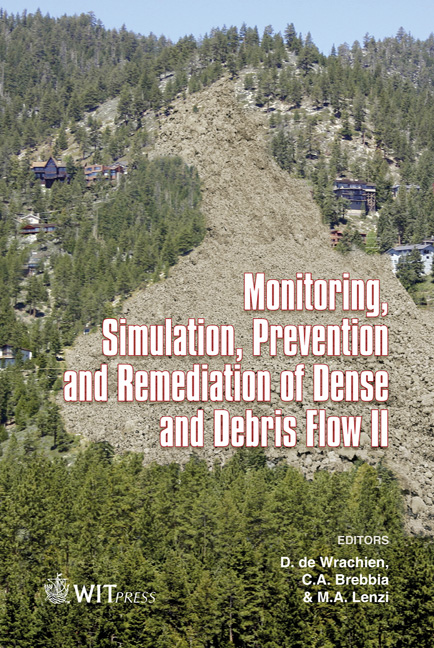Evaluation Of Debris Flow Hazard To Chalala Village, Quebrada De Humahuaca UNESCO World Heritage Site, Jujuy Province, Argentina
Price
Free (open access)
Transaction
Volume
60
Pages
11
Page Range
113 - 123
Published
2008
Size
535 kb
Paper DOI
10.2495/DEB080121
Copyright
WIT Press
Author(s)
M. A. González, V. Baumann & L. E. Jackson Jr.
Abstract
Chalala village is situated on the alluvial fan of Quebrada Chalala that is periodically affected by extensive debris flows. Servicio Geológico Minero Argentino (SEGEMAR) sought to establish the magnitude and frequency of debris flows from unmonitored Chalala basin. Analysis of historical records, oral accounts, and investigations of debris flow deposits and surveys of two debris flows in 2007 assigned Chalala and adjacent Coquena fans to high frequency and large magnitude ratings in semi-quantitative hazard rating schemes. Two methods were used to estimate the volume of the maximum likely debris flow for the purposes of debris-flow-defence design and hazard evaluation. Method one extrapolated known peak discharge/total volume relationships using a power relationship for debris (mud) flows displaying similar rheology. Method 2 involved extrapolation of known extreme sediment yield values. The methods yielded comparable results for the two basins. The method 2 estimate of 4.6x105m3 is consistent with geomorphic and stratigraphic investigations and eyewitness accounts of events over the past 62 years. An additional uncertainty coefficient of 1.2 is recommended. Keywords: debris flow, mudflow, Argentina, Andes, Humahuaca, Purmamarca. 1 Introduction Debris flows and debris floods are widespread hazards throughout the Andes from Venezuela to Argentina [1–3]. Unlike analogous mountainous drainage
Keywords
debris flow, mudflow, Argentina, Andes, Humahuaca, Purmamarca.





